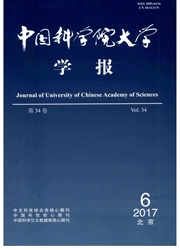

 中文摘要:
中文摘要:
应用1998~2003年7、8月份的北京市10个气象台站和1个自动台站观测资料以及中国科学院大气物理研究所325m气象塔的观测资料,对北京市的夏季城市热岛特征及其气象场进行了分析.结果表明:北京市夏季城市热岛现象明显,1998~2003年期间平均热岛强度达到1.64℃;强热岛主要发生在夜间,02时的平均热岛强度为2.62℃.而白天城市热岛减弱较快,14时的平均强度为0.6℃,有时甚至会出现冷岛现象;随着北京市城市化进程的不断深入,其城市热岛强度〉2℃的天数也在逐年增加,最强时可达9℃;当热岛强度很强时,北京市近地层的风场会出现较明显的热岛环流(辐合),且风速较小(〈2m/s).结合中国科学院大气物理研究所325m气象塔的观测资料可以发现:城市强热岛出现时,北京市的大气边界层逆温不仅强,而且逆温层顶较高.
 英文摘要:
英文摘要:
In this paper, the summer meteorological data (from 1998 to 2003) from 10 observatories, 1 autoobservatory and the Beijing 325m tower have been used to study the urban heat island (UHI) and the meteorological fields near the surface in the summer of Beijing. The results show that the UHI in Beijing summer is very obvious, and its average intensity reaches 1.64℃ over the past 6 years; the strong UHI occurs mainly at night (average intensity is 2.62℃ at 02:00 a.m. ). In daytime, it becomes weaker quickly, the average intensity is 0.6℃ at 2: 00 p.m., and sometimes even an urban cold island (UCI) can be found. With the development of urbanization in Beijing, the number of days with UHI intensity more than 2℃ increases year by year, and the strongest UHI reaches 9 ℃ ; when the UHI is very strong, the wind field can show an UHI circulation (convergence) with weak wind in urban areas. Combined with the data of the 325m tower, the results also show that when strong UHI occurs, the inversion in atmospheric boundary layer (ABL) is very obvious, and its top is very high.
 同期刊论文项目
同期刊论文项目
 同项目期刊论文
同项目期刊论文
 期刊信息
期刊信息
